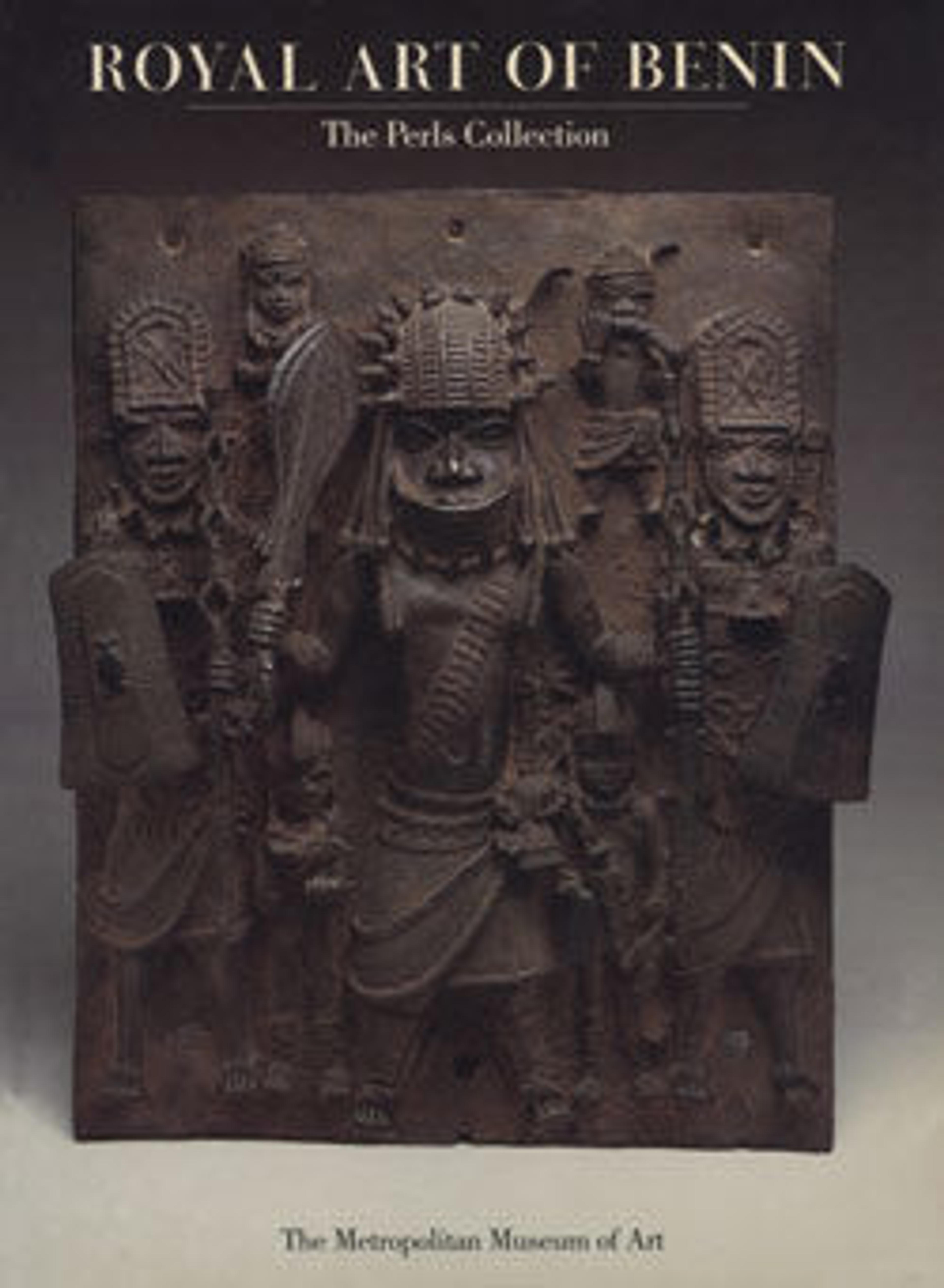Crown bell head copy
Residents of the mineral-rich region south of the confluence of the Niger and Benue Rivers developed technical expertise in copper-alloy casting as early as the ninth century CE. Over time, Igbo-Ukwu, Ile-Ife, and Benin City emerged as renowned casting centers, each responsible for its own tradition of artistry in metalwork. Across this vast cultural zone, trade networks, powerful oracles, and waves of migration contributed to the sharing and cross-pollination of aesthetic ideals. In this context a concentration of provincial casting sites flourished. Art historians have used the term Lower Niger Valley Bronze Industries to refer to the outpouring of stylistically related, yet original works produced by artists at these centers.
The copper alloys used in the creation of such bronzes were valued for their rich sonic qualities as well as their warm hue, making them an ideal medium for bells and the jangling insignia used by leaders to augment their presence. Rung to summon spiritual entities or as attributes of powerful individuals, bells make up a great number of Lower Niger Bronzes. Durable and portable, they circulated widely throughout southern Nigeria. Many bells are shaped like human heads, with embellishments that highlight the powers of speech and sight. Others depict animals, possibly as subjects of prestige or sacrifice. One variety of bell head became so popular at the turn of the twentieth century that brass replicas were mass-produced in Birmingham, England, and exported to Nigeria before recirculating on the global art market.
The copper alloys used in the creation of such bronzes were valued for their rich sonic qualities as well as their warm hue, making them an ideal medium for bells and the jangling insignia used by leaders to augment their presence. Rung to summon spiritual entities or as attributes of powerful individuals, bells make up a great number of Lower Niger Bronzes. Durable and portable, they circulated widely throughout southern Nigeria. Many bells are shaped like human heads, with embellishments that highlight the powers of speech and sight. Others depict animals, possibly as subjects of prestige or sacrifice. One variety of bell head became so popular at the turn of the twentieth century that brass replicas were mass-produced in Birmingham, England, and exported to Nigeria before recirculating on the global art market.
Artwork Details
- Title:Crown bell head copy
- Artist:Unknown caster, after Lower Niger Valley Bronze Industries
- Date:ca. 1900
- Geography:Nigeria (made in England), Lower Niger River region
- Culture:Lower Niger Bronze Industry
- Medium:Copper alloy
- Dimensions:H. 6 3/8 × Diam. 3 in. (16.2 × 7.6 cm)
- Classification:Metal-Musical Instruments
- Credit Line:Gift of Mr. and Mrs. Klaus G. Perls, 1991
- Object Number:1991.17.141
- Curatorial Department: The Michael C. Rockefeller Wing
More Artwork
Research Resources
The Met provides unparalleled resources for research and welcomes an international community of students and scholars. The Met's Open Access API is where creators and researchers can connect to the The Met collection. Open Access data and public domain images are available for unrestricted commercial and noncommercial use without permission or fee.
To request images under copyright and other restrictions, please use this Image Request form.
Feedback
We continue to research and examine historical and cultural context for objects in The Met collection. If you have comments or questions about this object record, please contact us using the form below. The Museum looks forward to receiving your comments.
